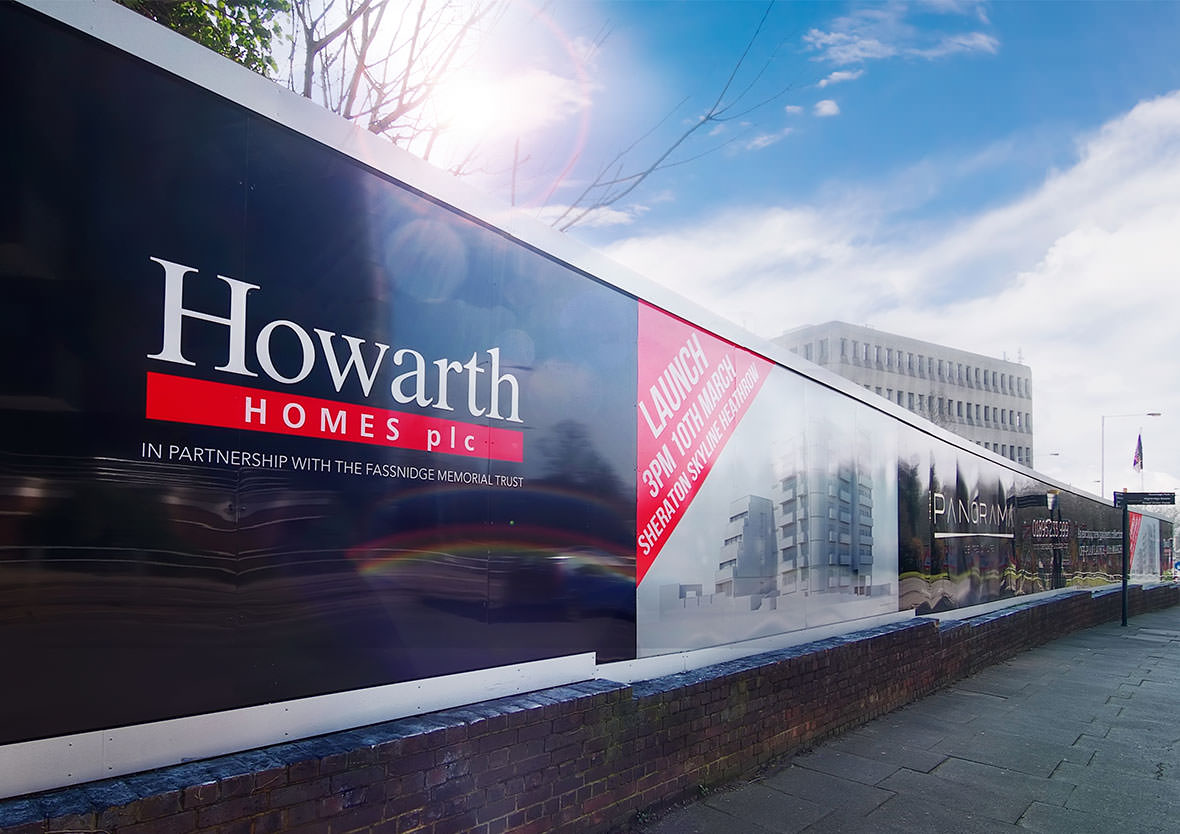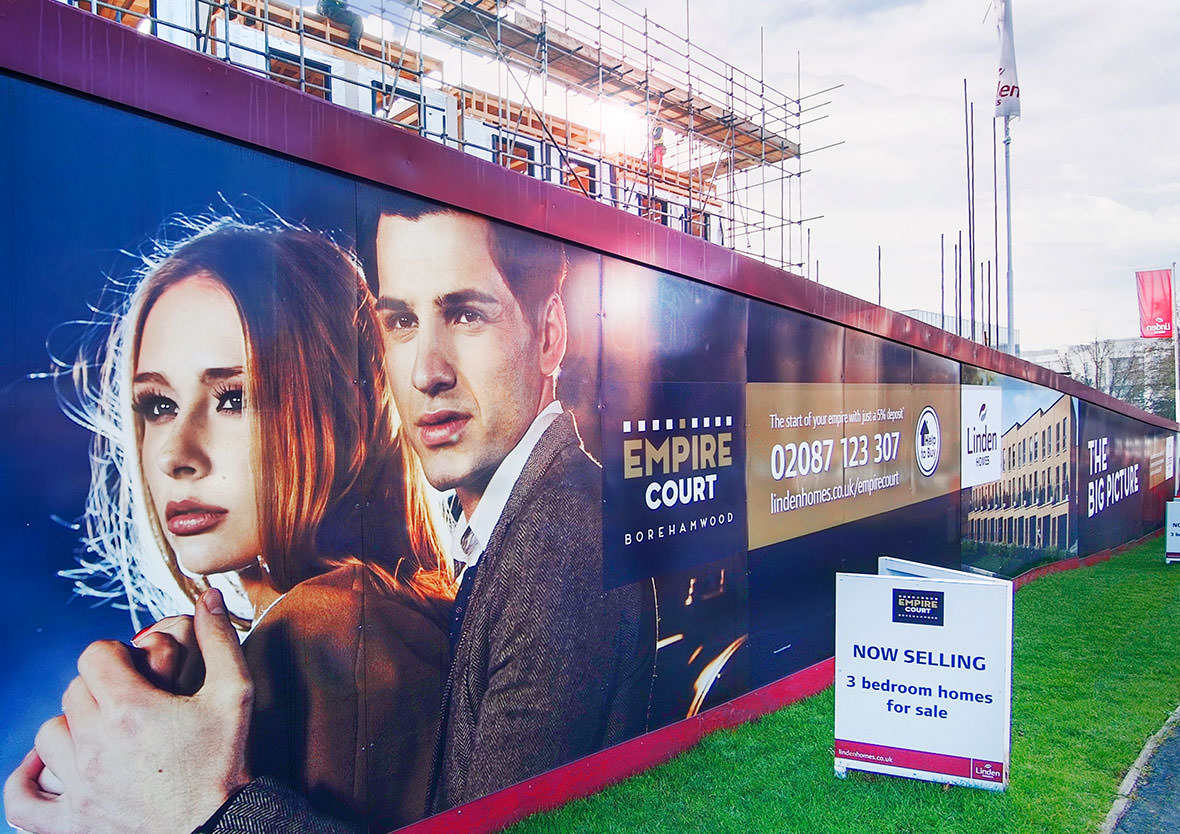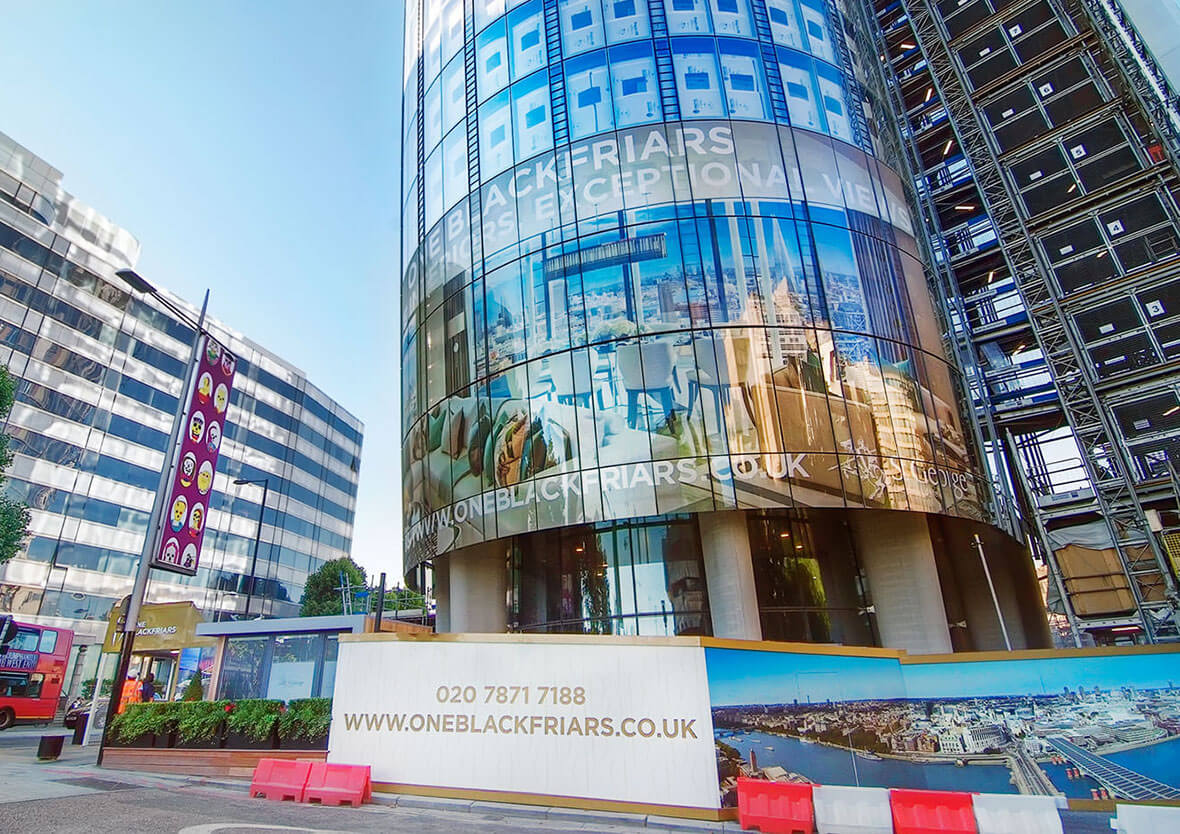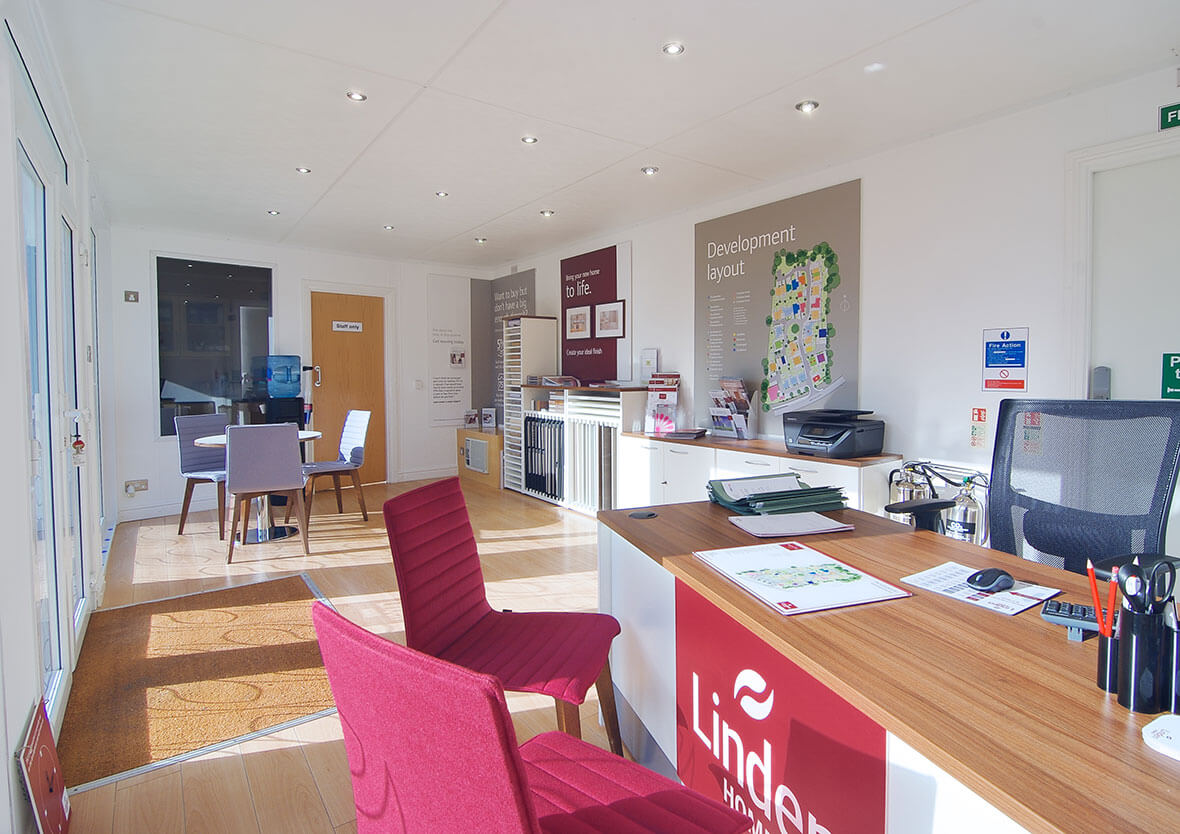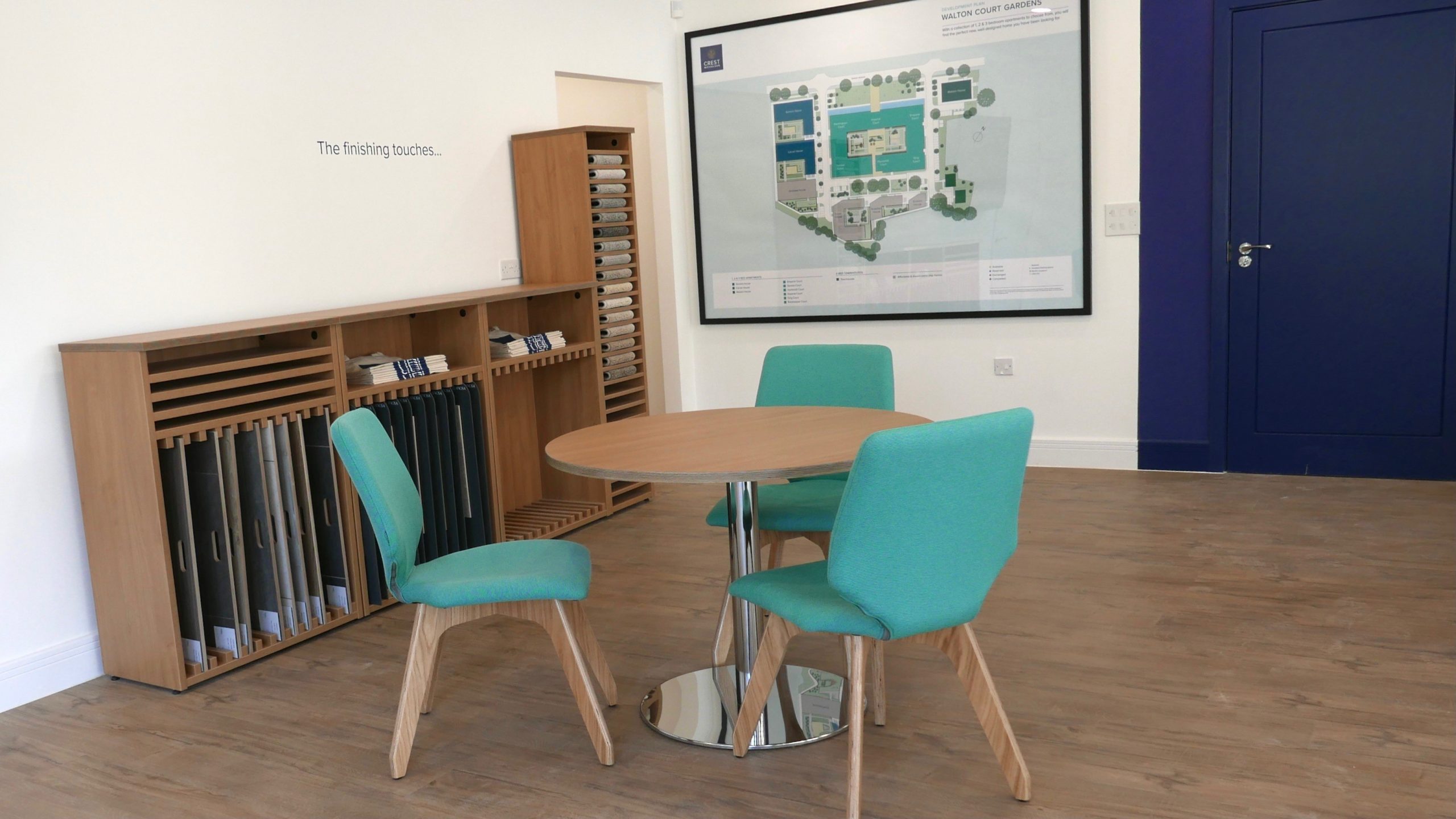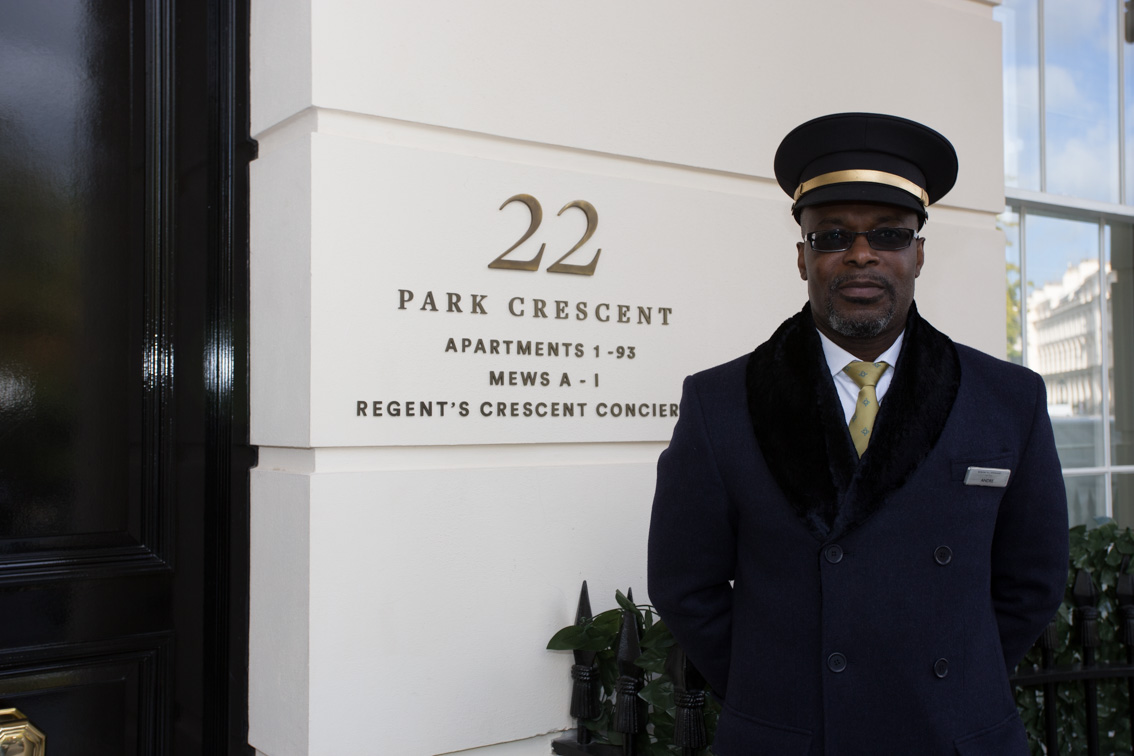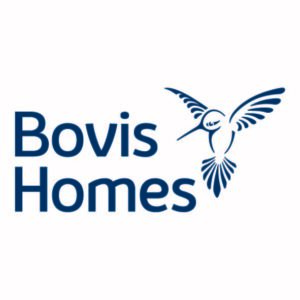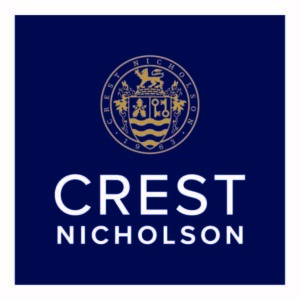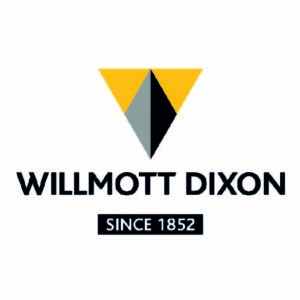A major development with hoarding, lightboxes, built-up illuminated lettering, wayfinding signage, totems and marketing suite signage The Brief Our initial brief from St George was to replace site hoarding at Beaufort Park in Hendon due to a revamp of all marketing signage, which had to be achieved prior to marketing launch. Beaufort Park is a mixed-use development providing a Mediterranean-style boulevard of shops, bars and restaurants as well as 2,800 homes. We were tasked with revamping the whole hoarding along Aerodrome Road and the perimeter of the new phase; a total of 240 linear meters. To showcase the development’s spa, gym and interiors, we needed to include lightboxes, with interchangeable faces and built-up illuminated lettering to a high-level corner section. A second phase signage project has also now been completed. The Solution The brief was to incorporate five large (over 3.3 x 2.5 m and 5.5 x 3 m), rhombus shaped light boxes into the hoarding. This was a bit of a challenge in itself because of the weight of the lightboxes. However, we also had the added complication of the proximity of the hoarding to the public footpath, meaning we couldn’t fit traditional lightboxes to the face of the hoarding. To address this, our team liaised with the site team and contractors to recess the lightboxes into the hoarding. We also ensured the hoarding would take the extra weight, without compromising its structure. This really made the development images pop-out for passers-by. The hoarding was also matt sealed, as opposed to gloss, which gives it a much more upmarket look and feel. As the development has progressed, we have also installed a second phase of signage around the site. This was designed to showcase the heritage of the Hendon Aerodrome, which is located next to the development and is now a Museum to the army air corp. This included large illuminated lettering, wayfinding signage, totems and other building and marketing suite signage. We have since installed new branded ACM cladding and refaced the existing lightboxes. Using the initial designs from the St George technical department and after several brainstorming sessions, we agreed and created the final signage. Our challenge was to source the correct materials and work within a tight time frame. The weather was also against us, particularly as large concrete bases had to be cast in heavy downpours. At the same time, we removed old signs and installed the new ones in minimal time, working around the public and busy roads. Our team worked closely with the development management to ensure minimal disruption and collaborated well with other tradespeople. We had to coordinate several install teams working on the hoarding at the same time to achieve the required finish date, which also meant our production team created three teams worth of work at the same time. This was achieved with a high level of planning and coordination between our production and install teams. Roy Cheesman, Senior Account Manager
